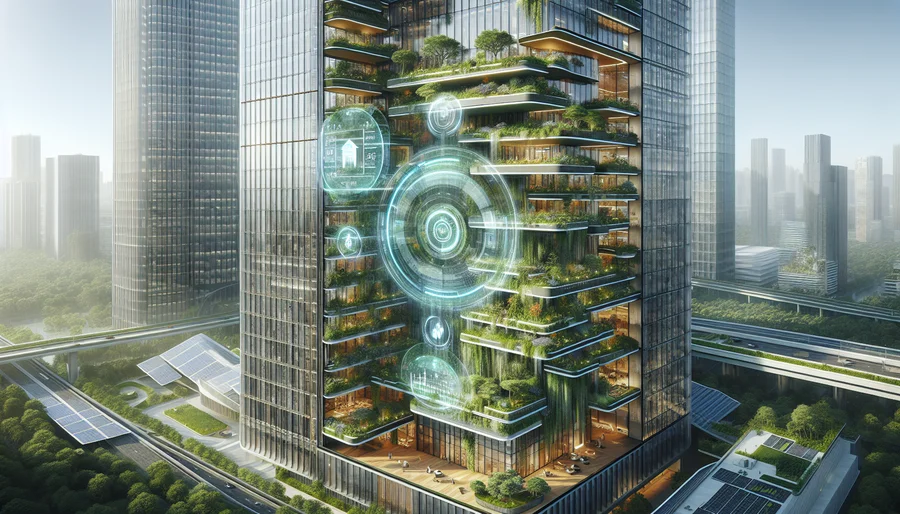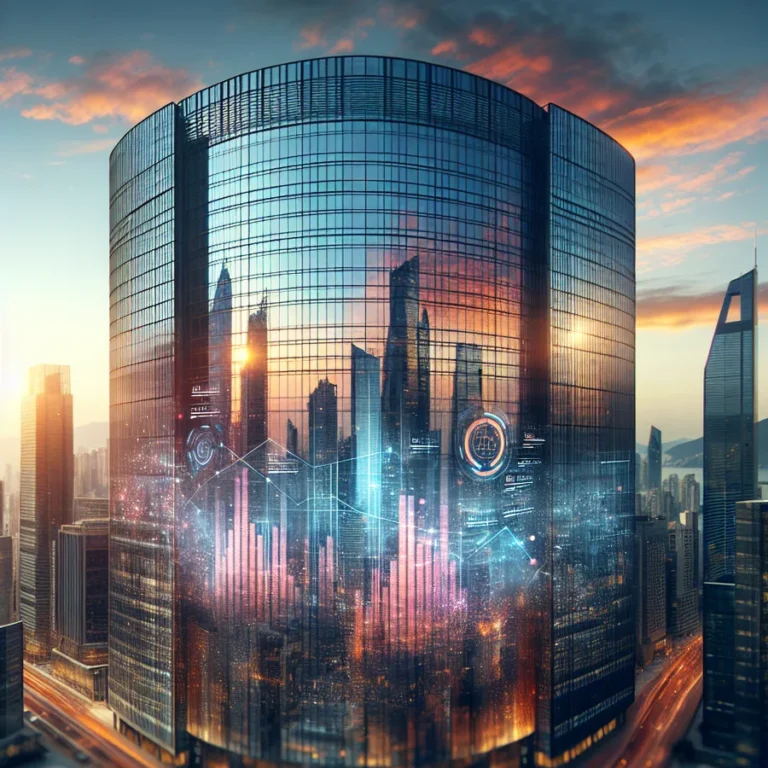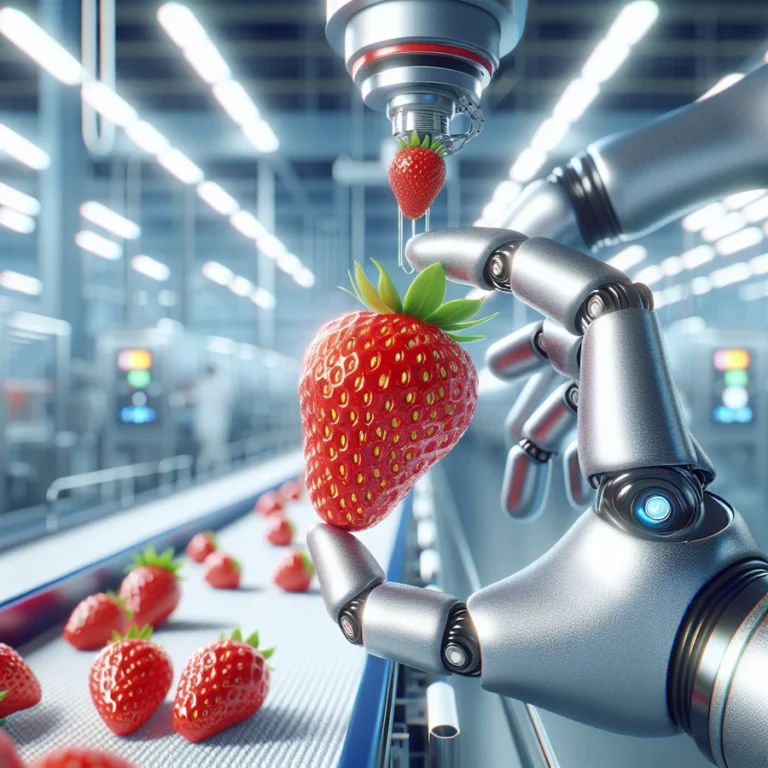AI in Architecture: Designing Smart and Sustainable Buildings
Imagine buildings that learn, adapt, and minimize their environmental impact. Artificial intelligence (AI) is rapidly changing architecture. It’s helping architects design buildings that are not only aesthetically pleasing but also incredibly efficient and sustainable. This guide explores how AI is revolutionizing the construction industry, creating a smarter and greener future.
From optimizing energy use to selecting eco-friendly materials, AI offers powerful tools. These tools help architects create buildings that are both innovative and responsible. Let’s dive into the exciting world of AI in architecture and discover how it’s shaping the future of our cities.
The Rise of AI in Architecture and Sustainable Design
The architecture, engineering, and construction (AEC) industry faces growing pressure. There’s a need for sustainable and efficient buildings. AI in architecture is emerging as a game-changer. It offers innovative solutions to design and construct our built environment.
AI’s ability to process vast amounts of data and optimize processes is key. It minimizes the environmental impact of buildings. This isn’t just about improving current practices. It’s about creating smarter, greener structures. These structures adapt to environmental demands and climate change challenges.
Enhancing Building Performance with AI
AI significantly elevates energy efficiency. It optimizes building performance. AI contributes to environmental sustainability. Innovative IoT solutions in building management are effective. They create more efficient and sustainable living spaces.
How AI is Transforming Architectural Design
AI is revolutionizing architectural design in several key areas. Let’s explore some concrete examples.
- Generative Design: AI algorithms explore multiple design options. They optimize for sustainability and structural efficiency.
- Predictive Energy Modeling: AI integrates with Building Information Modeling (BIM). It forecasts energy usage and simulates thermal behavior.
- Material Selection: AI automates Life Cycle Assessments (LCA). It evaluates material sustainability from extraction to disposal.
These applications of AI empower architects. They make informed decisions that minimize environmental impact. This leads to more sustainable and responsible building designs.
AI-Driven Generative Design for Sustainability
AI enhances architectural design through Generative Design. Algorithms explore multiple sustainable construction solutions. GANs (Generative Adversarial Networks) generate architectural models. These models are optimized for sustainability. Evolutionary Algorithms (EA) iteratively improve design. They analyze structural efficiency and environmental impact.
Optimizing Energy Efficiency with AI
Minimizing the environmental footprint of buildings is a pressing challenge. AI can play a crucial role in optimizing energy efficiency. It analyzes vast datasets related to building materials and climate conditions. It also looks at occupancy patterns and energy consumption.
AI identifies design parameters that minimize energy waste. For example, it suggests optimal building orientation and window placement. It also helps choose insulation materials to reduce heating and cooling loads. AI can analyze real-time data from building management systems. This dynamically adjusts lighting and HVAC systems. This further optimizes energy use based on actual conditions.
Reminder: AI’s predictive skills help anticipate energy demand. They optimize energy consumption to avoid waste.
AI-Based HVAC and Climate Control
AI optimizes heating, ventilation, and air conditioning (HVAC) systems. It minimizes energy consumption. Reinforcement Learning (RL) adjusts HVAC settings dynamically. It considers occupancy and outdoor conditions. LSTM (Long Short-Term Memory) Networks forecast energy demand. They use historical data.
Sustainable Construction Methods Using AI
AI-driven systems are revolutionizing construction practices. They improve construction precision and minimize waste. AI optimizes construction workflows in large urban developments. This ensures efficient use of materials like steel, concrete, and glass.
Building Information Modelling (BIM) is a fundamental AI technology. It’s used in the design process. BIM enables architects to simulate construction situations. They can select the most sustainable materials and procedures. AI-enabled BIM technology reduces material waste. It improves energy efficiency by integrating recycled materials.
Note: AI tools help guide construction practices. They minimize resource consumption during construction.
AI in Sustainable Material Selection
AI automates Life Cycle Assessments (LCA). It evaluates material sustainability from extraction to disposal. Random Forest Classifiers predict the environmental impact of construction materials. Natural Language Processing (NLP) extracts sustainability metrics from datasets. These datasets contain material properties.
AI Powering Smart Cities and Urban Planning
AI’s impact extends beyond individual buildings. It includes urban planning and transportation design. AI enables the development of smart cities. These cities optimize energy use and decrease waste. They improve the general quality of life.
AI systems continuously monitor a city’s energy and resource use. This ensures maximum efficiency and minimal environmental impact. AI-powered transportation solutions reduce the carbon footprint of urban commuting. These solutions use AI to adjust routes based on real-time traffic data. This reduces energy consumption and congestion.
Example: AI-driven smart grids analyze urban data in real time. They predict peak energy loads and adjust power distribution. This optimizes energy consumption and reduces dependence on fossil fuels.
Challenges and Future of AI in Architecture
While AI offers tremendous potential, there are challenges to address. Architects need user-friendly tools. These tools should leverage AI’s capabilities without requiring deep AI expertise. Data privacy and security are paramount. Transparency and explainability are essential for building trust in AI-driven design solutions. Addressing data privacy concerns is crucial for widespread adoption.
As AI technology evolves, its role in sustainable architecture will become more important. AI systems will assist architects in designing buildings and cities. These designs will reduce construction waste and increase energy efficiency.
From AI-driven smart grids to sustainable construction practices, AI is driving advancements. It inspires a new generation of architects and engineers. They can use AI to process complex environmental data and guide sustainability practices.
Future Prospects of AI in Sustainable Construction
Quantum computing combined with AI accelerates sustainable material development. AI optimizes bacteria-based self-repairing concrete mixtures. AI-powered modular construction reduces emissions significantly. These advancements define the next era of green architecture.
Conclusion
AI in architecture is not just a trend; it’s a fundamental shift. It’s changing how we design, construct, and manage buildings. By embracing AI, architects can create structures that are more sustainable, efficient, and resilient. As AI continues to evolve, it promises a future where our built environment works in harmony with the natural world. You can explore more about AI’s role in architecture.
FAQs about AI in Architecture
How does AI improve energy efficiency in buildings?
AI analyzes data to optimize building orientation, window placement, and HVAC systems. It dynamically adjusts energy consumption based on occupancy and environmental conditions.
What is generative design in architecture?
Generative design uses AI algorithms to explore multiple design options. It optimizes for sustainability, structural efficiency, and other performance criteria.
How does AI contribute to sustainable material selection?
AI automates Life Cycle Assessments (LCA) to evaluate the environmental impact of materials. It helps architects choose low-carbon and recycled alternatives.
What are the challenges of using AI in architecture?
Challenges include the need for user-friendly tools, data privacy concerns, and ensuring transparency in AI-driven recommendations.
What is the future of AI in architecture?
The future includes advancements like quantum AI for material discovery, self-healing concrete, and AI-integrated robotic prefabrication. These innovations will further enhance sustainability and efficiency. For instance, AI could significantly impact water management within building designs.






